By Richard Alexander Ibarra, Editor-in-Chief, Vox Populi Press
Throughout history, empires have risen and fallen, their dominance maintained not only by military power and economic strength but also by the ability to control narratives. The Post War International Rules-Based Order (RBIO), established in the aftermath of World War II, has functioned on these very principles, relying heavily on psychological operations (PSYOPs) to sustain its legitimacy. In many ways, the RBIO can also be known as the Age of the PSYOP—an era in which information manipulation, perception management, and psychological warfare have been deployed to maintain control both globally and domestically. However, both of these constructs are now unraveling before our eyes, their collapse accelerating in real time as trust in institutions plummets and alternative narratives gain traction.
The Psychological Foundations of the RBIO
The RBIO is often framed as a system built on democracy, human rights, free markets, and international cooperation. Yet, its maintenance has required far more than goodwill and diplomacy—it has necessitated an intricate web of information control, narrative engineering, and psychological influence. The architects of this order understood that control over mass perception was just as critical as control over armies and economies.
The Origins of Psychological Manipulation: Edward Bernays and the Birth of Public Relations
The modern practice of shaping public opinion can be traced back to the early 20th century with the rise of public relations, propaganda, and psychological warfare. Figures such as Edward Bernays, the “Father of Public Relations,” laid the groundwork for the use of mass psychology to influence behavior. Drawing on his uncle Sigmund Freud’s theories, Bernays pioneered the idea that emotions, rather than rational thought, drive human decision-making.
During World War I, Bernays played a key role in the U.S. government’s Committee on Public Information (CPI), where he utilized psychological techniques to generate public support for the war effort. This initiative demonstrated how information could be manipulated on a mass scale to shape opinions and behaviors.
In the 1920s, Bernays orchestrated the infamous “Torches of Freedom” campaign, linking women’s smoking to gender liberation. By strategically framing cigarettes as symbols of female empowerment, he leveraged existing social movements to promote corporate interests. This campaign was a testament to the power of narrative control in influencing social behavior and consumer habits.


Bernays also played a crucial role in shaping American dietary habits. Working for the Beech-Nut Packing Company, he convinced doctors to endorse bacon and eggs as a healthy breakfast, embedding this concept into American culture through expert-backed endorsements. This was a prime example of how public perception could be reshaped by appealing to authoritative figures and societal norms.
His seminal work, Propaganda (1928), argued that elite control over mass opinion was essential to maintaining order in democratic societies. He posited that public relations and media management were necessary tools for directing public thought, cementing the foundation for future psychological operations in governance and commerce.
“Those who manipulate this unseen mechanism of society constitute an invisible government which is the true ruling power of our country.” Edward Burneys
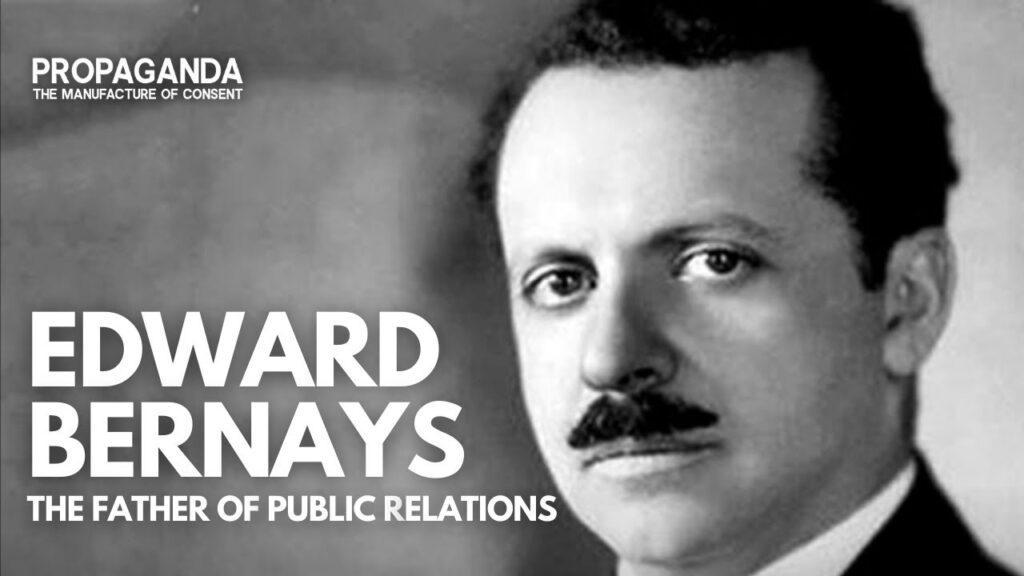
These early techniques laid the groundwork for powerful statecraft tools, particularly during the Cold War, when propaganda became a central weapon in ideological warfare. The principles developed by Bernays were expanded upon and refined, transforming into sophisticated PSYOP strategies that would influence global politics for decades to come.
Cold War PSYOPs: Engineering Global Perceptions
During the Cold War, the U.S. and its allies institutionalized psychological operations, leveraging media, cultural initiatives, and covert propaganda to shape global perceptions. Agencies like the CIA, State Department, and various NGOs played pivotal roles in crafting narratives that positioned the RBIO as the beacon of freedom while delegitimizing alternatives.
Psychology’s Role in Shaping Behavior
Psychology provided the scientific backbone for propaganda and PR. The understanding of human behavior, fear, and cognitive biases allowed states and corporations to predict and manipulate responses. Freudian and behavioral principles underpinned efforts to influence mass opinion, giving rise to tactics that targeted emotions and subconscious desires.
The Dulles Brothers and the Strategic Use of Propaganda
John Foster Dulles, serving as Secretary of State, and his brother Allen Dulles, the Director of the CIA, represented the seamless integration of corporate power with psychological warfare. Their extensive backgrounds in finance, intelligence, and geopolitics equipped them with the expertise necessary to shape global narratives, ensuring U.S. dominance through calculated propaganda efforts and covert interventions.
One of their most infamous operations was Iran (1953): Operation Ajax. This CIA-MI6 orchestrated coup leveraged bribed media, fabricated news reports, and staged radio broadcasts to vilify Prime Minister Mohammad Mossadegh, branding him a communist threat. By engineering public dissent and portraying his leadership as a danger to stability, they successfully justified his removal and reinstated the Shah’s pro-Western regime.
Similarly, in Guatemala (1954): Operation PBSuccess, psychological operations played a critical role in toppling President Jacobo Árbenz. His land reforms, which threatened U.S. corporate interests, were framed through a relentless media campaign as a creeping extension of Soviet influence. Carefully curated disinformation eroded domestic and international support for Árbenz, ultimately facilitating his overthrow.
The Congo (1961): The Assassination of Patrice Lumumba stands as one of the most egregious examples of psychological warfare and clandestine intervention. The CIA, fearing Lumumba’s potential alliance with the Soviet Union, deployed an array of PSYOP tactics to destabilize his government. A combination of anti-communist propaganda, bribed political figures, and covert support for opposition factions systematically weakened his position. This campaign of manipulation culminated in his capture and execution, ensuring the Congo remained firmly within the sphere of Western influence.
Beyond direct regime change, the Dulles brothers also spearheaded The Cultural Cold War, a long-term psychological operation designed to win the hearts and minds of intellectuals, artists, and the global elite. The CIA clandestinely funded literary magazines, art exhibitions, and film productions to promote Western liberal democracy as the superior ideological model. By supporting abstract expressionist art over Soviet realism, they subtly undermined communist cultural narratives, shaping artistic movements as tools of ideological persuasion.
Through these operations, the Dulles brothers exemplified how narrative control could be used as a strategic weapon. By manipulating media, influencing cultural production, and deploying psychological operations, they reinforced the ILRBO’s global dominance. However, as history has demonstrated, such control is neither absolute nor permanent. The cracks in the facade began to show, paving the way for the eventual decline of the very system they sought to sustain.
The Turn Inward: Domestic PSYOPs in the Post-Cold War Era
With the fall of the Soviet Union, external threats diminished, but the tools of psychological manipulation remained. In the 21st century, these techniques have increasingly been directed inward, toward domestic populations, to maintain the RBIO’s legitimacy. The focus shifted from fighting foreign adversaries to managing public perception at home, ensuring compliance with state policies and reinforcing centralized authority.
The War on Terror: Fear as a Psychological Weapon
In the wake of 9/11, fear-based narratives became an essential instrument of governance. The event provided justification for sweeping changes that profoundly reshaped civil liberties and public attitudes toward state power. Governments framed the “War on Terror” as an existential battle, necessitating aggressive policies to ensure national security.
One of the most significant legislative outcomes was the Patriot Act. It vastly expanded government surveillance capabilities, fostering an environment of suspicion where citizens were conditioned to equate security with the sacrifice of personal freedoms. The normalization of mass surveillance eroded expectations of privacy, embedding state oversight into daily life.
Drone warfare further advanced the expansion of unchecked state power. Extrajudicial killings became routine, as governments justified covert military actions under the pretext of neutralizing terrorist threats. Over time, the desensitization to these operations undermined legal and ethical constraints on military engagement, making state-sanctioned assassinations an accepted norm.
Intelligence agencies played a crucial role in manipulating public perception. By selectively leaking information and fostering fear-based rhetoric, they ensured continuous public support for ongoing conflicts. Controlled narratives kept the populace in a heightened state of anxiety, reinforcing the necessity of perpetual warfare.
Emotional appeals to national security became a powerful tool in discouraging dissent. Any opposition to government policies was framed as unpatriotic or even subversive, silencing critical voices and solidifying state control. The atmosphere of fear ensured that even policies once deemed unacceptable—such as indefinite detention—were tolerated in the name of security.
By continuously reinforcing the presence of an omnipresent enemy, governments successfully manufactured public acquiescence to policies that otherwise would have faced significant resistance. The War on Terror revealed how psychological operations could be employed domestically, not just to manage crises, but to fundamentally reshape societies in ways that aligned with elite interests rather than democratic principles.
Populism and the Threat to Narrative Control
As populist movements surged across the U.S. and Europe, they presented a direct challenge to the institutional structures of the RBIO. These movements, which often rallied against globalization, economic inequality, and political elites, found resonance among populations disillusioned by decades of policy failures and unfulfilled promises. In response, a new wave of psychological operations (PSYOPs) emerged, aimed at suppressing these movements and delegitimizing their narratives.
One of the most powerful tools in this effort was media framing. Leaders such as Donald Trump, Brexit proponents, and European nationalist figures were consistently portrayed as irrational, dangerous, or even aligned with hostile foreign powers, particularly Russia. By framing these movements as threats to democracy or global stability, mainstream media reinforced the notion that opposition to neoliberal policies was inherently reckless or illegitimate. This strategic narrative management worked to neutralize dissent, keeping political discourse within acceptable boundaries dictated by the RBIO’s interests.
The COVID-19 pandemic further exposed the extent of information control in modern governance. Early discussions surrounding the pandemic’s origins, including the possibility of a lab leak or bioweapon, were swiftly dismissed as “conspiracy theories.” Government and media institutions worked in concert to discredit such claims, only for later investigations to reveal their plausibility. This demonstrated how authorities manipulated scientific discourse to maintain public trust in global health institutions.
Similarly, pandemic policies heavily relied on fear-driven compliance rather than open debate. The rapid enforcement of lockdowns, vaccine mandates, and digital surveillance tools occurred under the guise of public safety, with little room for alternative discussions. Those who questioned these policies were often labeled as extremists or science-deniers, further illustrating how psychological operations were used to manufacture public consensus.
These developments reflect a broader strategy of narrative enforcement. As populist movements and crises expose cracks in the RBIO’s framework, psychological operations have shifted from foreign interventions to domestic control, ensuring that dissent remains fragmented and delegitimized before it can gain widespread traction.
The Role of Technology: The Ultimate PSYOP Weapon
The digital age has revolutionized psychological warfare, making it more pervasive and precise than ever before. Governments, corporations, and interest groups now wield an array of technological tools to shape public opinion, manufacture consent, and suppress dissent. The combination of social media, big data analytics, artificial intelligence, and cyber warfare has allowed for an unprecedented level of influence over mass perception.
Algorithmic Narrative Control
Social media platforms such as Facebook, Twitter, and YouTube have become the battlegrounds for modern information warfare. These platforms deploy sophisticated algorithms that prioritize and amplify state-sanctioned or corporate-backed narratives while relegating alternative viewpoints to obscurity. By curating content based on engagement patterns, these platforms create digital echo chambers where dissenting opinions are either drowned out or systematically suppressed. The result is a controlled environment where public discourse is artificially steered in favor of dominant power structures.
Moreover, tech companies, in collaboration with government agencies, implement content moderation policies under the guise of combating misinformation. While ostensibly meant to curb harmful or false narratives, these policies often function as tools for political censorship, ensuring that dissenting voices critical of government policies or corporate interests struggle to reach a broad audience.
Cyber Warfare and Hybrid PSYOPs
The advent of cyber warfare has expanded the scope of psychological operations beyond traditional propaganda. Governments and private entities now deploy AI-driven disinformation campaigns to manipulate elections, destabilize adversarial regimes, and control political narratives. These hybrid PSYOPs blend digital subversion with conventional propaganda tactics, creating an ecosystem where misinformation and perception management work hand in hand.
Election interference is one of the most prominent applications of these tactics. Through the strategic deployment of bots, trolls, and deepfake technology, state and non-state actors can sway public opinion, polarize societies, and delegitimize electoral outcomes. The ability to micro-target individuals based on harvested data ensures that psychological operations are tailored with extreme precision, making them far more effective than traditional propaganda efforts.
Additionally, protest suppression has evolved with the use of digital tools. Governments deploy surveillance technologies to monitor and infiltrate dissident movements, using artificial intelligence to predict and preempt large-scale demonstrations. Disruptive tactics, such as throttling internet access, shadow-banning activists, or flooding opposition networks with counter-messaging, allow authorities to control the flow of information and minimize resistance.
As these technological advancements continue to evolve, the ability to manipulate perception will only become more refined. The integration of AI, machine learning, and behavioral data analytics in information warfare ensures that the modern PSYOP is more targeted, adaptive, and insidious than ever before. Understanding these mechanisms is crucial in recognizing and resisting the ever-growing influence of digital psychological operations on our collective reality.
The Collapse: A Fractured Narrative Control System
For decades, the RBIO maintained its dominance through an intricate web of media influence, technological control, and academic alignment. However, the once-unshakable grip on global narratives is now unraveling. Disillusionment is spreading, and independent sources of information are challenging the tightly managed discourse that once upheld the order’s legitimacy. What was once considered the absolute truth is now met with skepticism, as cracks appear in the carefully curated façade of authority.
Erosion of Institutional Trust
Public faith in traditional institutions has been significantly eroded by a series of global crises that have exposed their contradictions and failures. The Iraq War (2003), initially justified through narratives of imminent threat, later unraveled as a misguided conflict based on faulty intelligence. The 2008 financial crisis shattered confidence in economic institutions, as those responsible for the collapse were shielded from accountability while ordinary citizens bore the brunt of the consequences. The global response to the COVID-19 pandemic further deepened skepticism, as shifting policies, censorship of dissenting opinions, and revelations of misinformation undermined trust in public health and governance. These events have created a growing movement seeking alternative perspectives, weakening the RBIO’s ability to craft and enforce a singular, unquestioned narrative.
The Rise of Decentralized Information Networks
The digital age has shattered the traditional monopoly on information. Independent media platforms, whistleblowers, and investigative journalists have emerged as powerful disruptors, challenging the control once held by state-aligned media outlets. Social media has become a battleground where mainstream narratives are contested in real time, while blockchain technology and encrypted communication channels provide avenues for uncensored discourse. This decentralization has introduced a new dynamic to global communication, where individuals can access multiple perspectives beyond state-approved messaging. As grassroots reporting grows stronger, traditional institutions struggle to maintain influence, often resorting to censorship and algorithmic suppression to curb the spread of dissenting viewpoints.
Multipolarity and the Challenge to Western Hegemony
The global power structure is shifting as rising nations present alternative governance models and ideological frameworks. Countries like China and Russia, along with emerging regional blocs, are actively challenging the RBIO’s dominance by crafting their own media ecosystems and international alliances. These alternative models have gained traction among populations disillusioned by Western interventionism, economic instability, and the perceived failures of neoliberal policies. The battle for influence is no longer a one-sided affair; it has transformed into a contested space where multiple powers seek to control narratives, shape global perception, and redefine the structures of governance. As these new forces rise, the RBIO finds itself increasingly unable to dictate the rules of engagement unchallenged.
The Unraveling of the Age of the PSYOP
For decades, the RBIO wielded psychological operations with precision, shaping public perception through sophisticated propaganda techniques. However, no system built on narrative manipulation can endure indefinitely. As institutional credibility crumbles, independent media continues to rise, and alternative powers assert their influence, the very foundations of the RBIO’s information control are collapsing. The battle for the future of global discourse is intensifying, ushering in an era where the manipulation of reality is no longer a one-sided game, but a contested battlefield of competing perspectives.
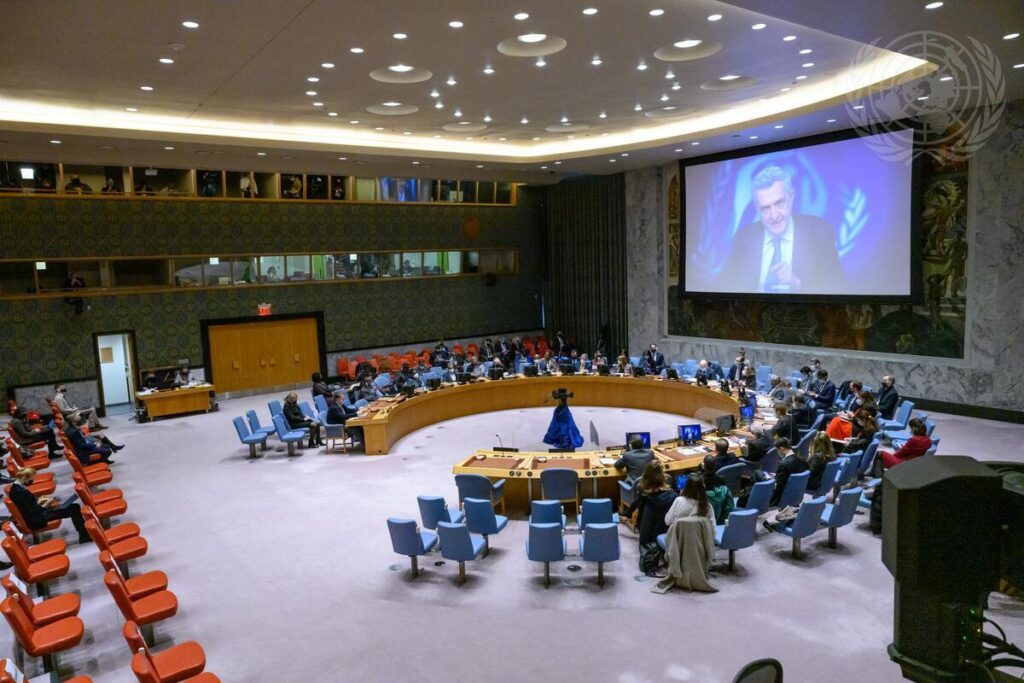

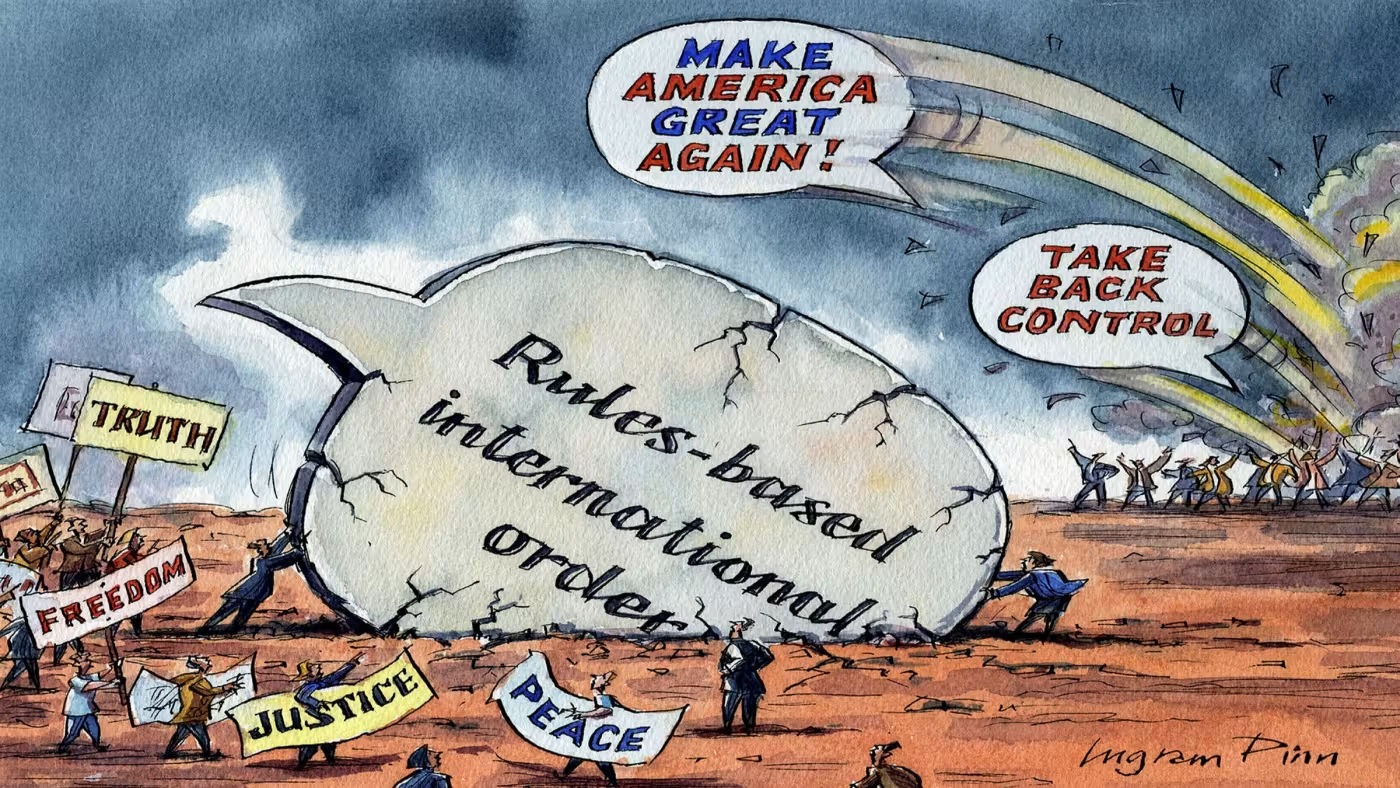
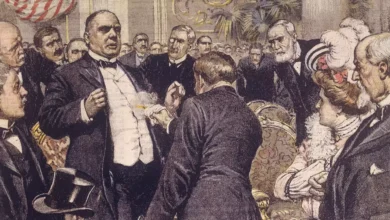
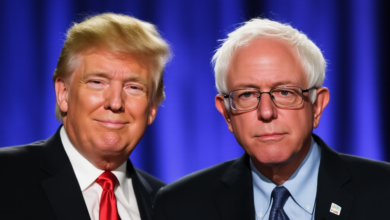


Hi, this is a comment.
To get started with moderating, editing, and deleting comments, please visit the Comments screen in the dashboard.